This week’s recalls:
– Volkswagen Golf – seat-belts
– Fiat – speed limiter
– Citroen, Fiat, Toyota – camshaft chain
Overview of the recalls in the 30th week of 2025
Six recalls for 17 models of six makes were published via EU Safety Gate in week 30 of 2025. Eight recalls for 35 models of seven brands were released by the German Motor Vehicle Authority (KBA).
Citroen, Fiat, Land Rover, Polestar, Toyota and Volkswagen each have one recall in the European Safety Gate system this week.
Citroen, Fiat, Dodge, DS Automobiles, Opel, Peugeot, and Tesla are all recalling via the German KBA.
- Isn’t that your car? See also the recent recalls of other makes.
Great Wall of China
Chinese carmakers are rapidly entering the European market, offering electric vehicles with generous equipment and long range at attractive prices. While several of these models have already faced technical issues or obvious design flaws, official recalls among them remain rare. Why is this the case, even when problems are evident?
Obligation to announce recalls
According to EU Regulation 2018/858, any manufacturer who discovers a fault that could threaten safety, health, or the environment must immediately inform the relevant authorities and initiate corrective action—often in the form of a safety recall. In practice, however, this process often depends on whether the manufacturer identifies and acknowledges the problem. But this is also known from non-Chinese brands. European authorities lack a unified and proactive system for monitoring new models, particularly for small or newly established brands.
BYD SEAL example: non-functioning 4×4 drive
A documented example involves the BYD SEAL in Scandinavia. Many owners reported that the AWD (all-wheel drive) system failed to engage, leaving the vehicle operating only with rear-wheel drive. As a result, the car struggled to climb even a gentle snow-covered slope. The manufacturer addressed the problem with a software update, but without issuing an official recall. In similar cases, other automakers would likely trigger both a technical investigation and a public recall campaign.
Source: Teknikens Värld
Service campaigns instead of recalls
Chinese carmakers often take a different approach: they resolve defects during routine servicing without publicising them (though European carmakers sometimes do the same). This is legal as long as the defect does not pose an obvious risk. However, it is often difficult to determine where the line lies between comfort and safety features. If a car cannot drive safely in winter, does that mean it is unsafe?
– What is the difference between a recall and a service campaign?
Weak oversight and low market share
Another contributing factor is the relatively small number of Chinese cars sold in Europe. If only a few dozen or a few hundred or thousand vehicles are sold, there is insufficient statistical data for effective monitoring. Furthermore, many Chinese models are homologated in smaller EU countries, where regulatory scrutiny may be less stringent. The European Whole Vehicle Type Approval (WVTA) system enables manufacturers to obtain initial approval in one EU member state, after which that type of vehicle can be registered in all other EU states without undergoing further technical inspections or tests. While all states must enforce the same stringent technical and safety standards, some are considered more “welcoming” to new manufacturers, especially foreign ones, in terms of administration and procedure. For this reason, initial type approval is often sought in countries such as the Netherlands, Hungary, Lithuania or Cyprus, enabling unrestricted sales throughout the EU. However, this procedure is not ‘circumventing’ the rules – it is fully compliant with European legislation and is also used by some non-European (e.g. Korean) brands.
The USA: Much stricter
By contrast, in the USA, every manufacturer is required to report a safety defect within five working days, facing the threat of massive fines otherwise. As a result, the US sees far more transparent recall activity. However, Chinese brands are virtually absent from the US market, precisely because of strict regulations and tariffs.
Recalls do exist in China
It is not true, however, that Chinese brands such as BYD or Geely never announce recalls. For example, BYD recently recalled nearly 97,000 electric vehicles (Dolphin, Yuan Plus/Atto 3 models) owing to a defect in the electric power steering system that could have caused a short-circuit and increased fire risk. The affected vehicles were manufactured between February and December 2023, but the recall mostly targeted the Chinese market, not Europe. In 2022, Geely recalled more than 120,000 vehicles (Emgrand GS/GL, Boyue) over bonnet latch indicator problems—a potential road safety issue.
Chinese car manufacturers are quickly gaining ground in Europe, but when it comes to safety recalls and defect monitoring, they still have some way to go. Legally, they are subject to the same obligations as other manufacturers, but in practice, they often face little pressure, publicity or thorough oversight. This leaves consumers mainly reliant on information from journalists, testers, and personal experience.
Details on this week’s Safety Gate recalls can be found in the table below.
We write about the German KBA recalls in the following articles:
- Problems with the 1.5 BlueHDi engine have Citroen, Peugeot, and other brands
- Dodge RAM: Curtain airbag defect may cause injury
- Risk of immobilizer failure in Peugeot 208 and 2008
- Tesla Model Y and Model 3: Tyre pressure monitoring system malfunction
- Fiat Scudo and Doblo: Telematics malfunction leads to speed limiter failure
- KBA Archive
What we’ve written about in recent weeks:
- More old cars being recalled for dangerous airbags (week 29/25)
- Volvo brake failure (video) and Kia brake booster malfunction (week 28/25)
- Stellantis is recalling over a million cars with 1.5 BlueHDi engines (week 27/25)
- Faulty contacts are causing a fire risk at Hyundai and Mercedes (week 26/25)
What did we write about a year ago:
- Faulty wiring harnesses with Honda and Mercedes; high emissions with Opel (week 30/24)
- Possible oil leak with Land Rover and Jaguar engines (week 29/24)
- Possible camera failures with 11 Toyota and Lexus models (week 28/24)
- Toyota, Citroen, Skoda: Another large recall over Takata airbags (week 27/24)
- How satisfied are you with your car? Let us know! It’s anonymous, and no registration is required. Would you recommend your car to a friend?
- Post an Owners’ Review Now
Rapex Recalls announced in the 30th week of 2025
| Make, Model (years) | Problem |
|---|---|
| Citroen Berlingo (2017) | Due to oil carbonisation and high contact pressure, the 7 mm camshaft chain resistance can be reduced. |
| Citroen C3 (2017 – 2023) | Due to oil carbonisation and high contact pressure, the 7 mm camshaft chain resistance can be reduced. |
| Citroen C3 Aircross (2017 – 2023) | Due to oil carbonisation and high contact pressure, the 7 mm camshaft chain resistance can be reduced. |
| Citroen C-Elysée (2017 – 2023) | Due to oil carbonisation and high contact pressure, the 7 mm camshaft chain resistance can be reduced. |
| Citroen C4 (2020 – 2023) | Due to oil carbonisation and high contact pressure, the 7 mm camshaft chain resistance can be reduced. |
| Citroen C4 X (2022 – 2023) | Due to oil carbonisation and high contact pressure, the 7 mm camshaft chain resistance can be reduced. |
| Citroen C4 Cactus (2017 – 2020) | Due to oil carbonisation and high contact pressure, the 7 mm camshaft chain resistance can be reduced. |
| Citroen C4 Picasso (2018 – 2022) | Due to oil carbonisation and high contact pressure, the 7 mm camshaft chain resistance can be reduced. |
| Citroen C5 Aircross (2018 – 2023) | Due to oil carbonisation and high contact pressure, the 7 mm camshaft chain resistance can be reduced. |
| Citroen Spacetourer (2017 – 2022) | Due to oil carbonisation and high contact pressure, the 7 mm camshaft chain resistance can be reduced. |
| Fiat Doblo (2022 – 2023) | Due to oil carbonisation and high contact pressure, the 7 mm camshaft chain resistance can be reduced. |
| Fiat Ulysse (2021 – 2023) | Due to oil carbonisation and high contact pressure, the 7 mm camshaft chain resistance can be reduced. |
| Land Rover Defender (2019 – 2025) | The lower fixing on the accessory raised air intake may not fit correctly. |
| Polestar 3 (2024 – 2025) | Due to moisture ingress in a connector housing, the internal pins can corrode. |
| Toyota ProAce City (2018 – 2023) | Due to oil carbonisation and high contact pressure, the 7 mm camshaft chain resistance can be reduced. |
| Toyota ProAce Verso (2018 – 2023) | Due to oil carbonisation and high contact pressure, the 7 mm camshaft chain resistance can be reduced. |
| Volkswagen Golf (2024) | The safety belt on the front passenger side may not be correctly secured. |
Where now?
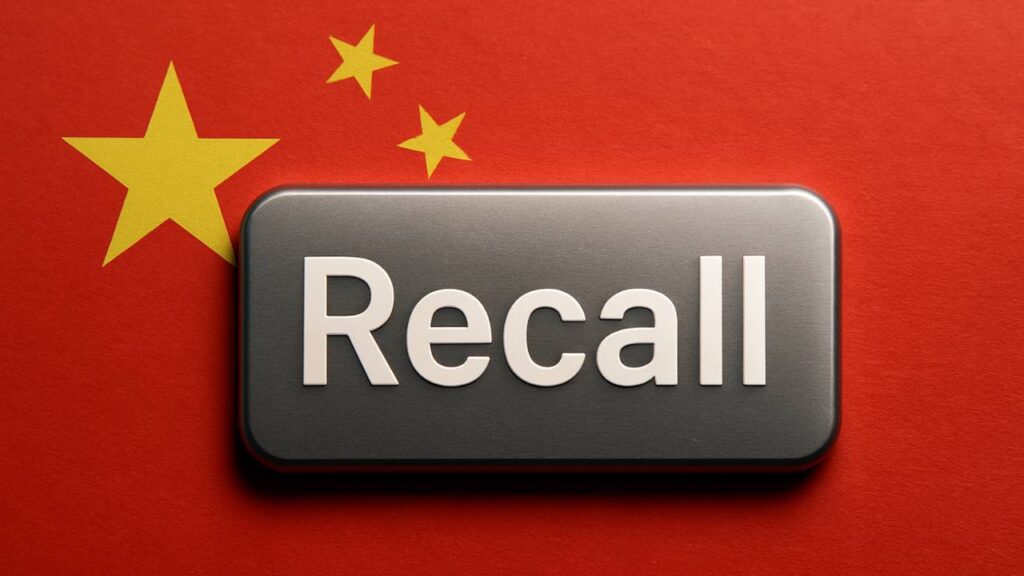
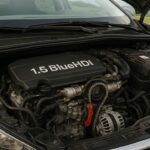
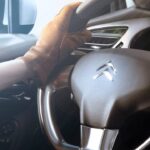
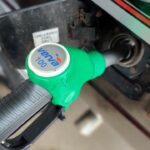


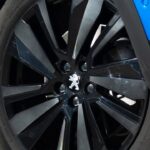



Currently 5219 Recalls